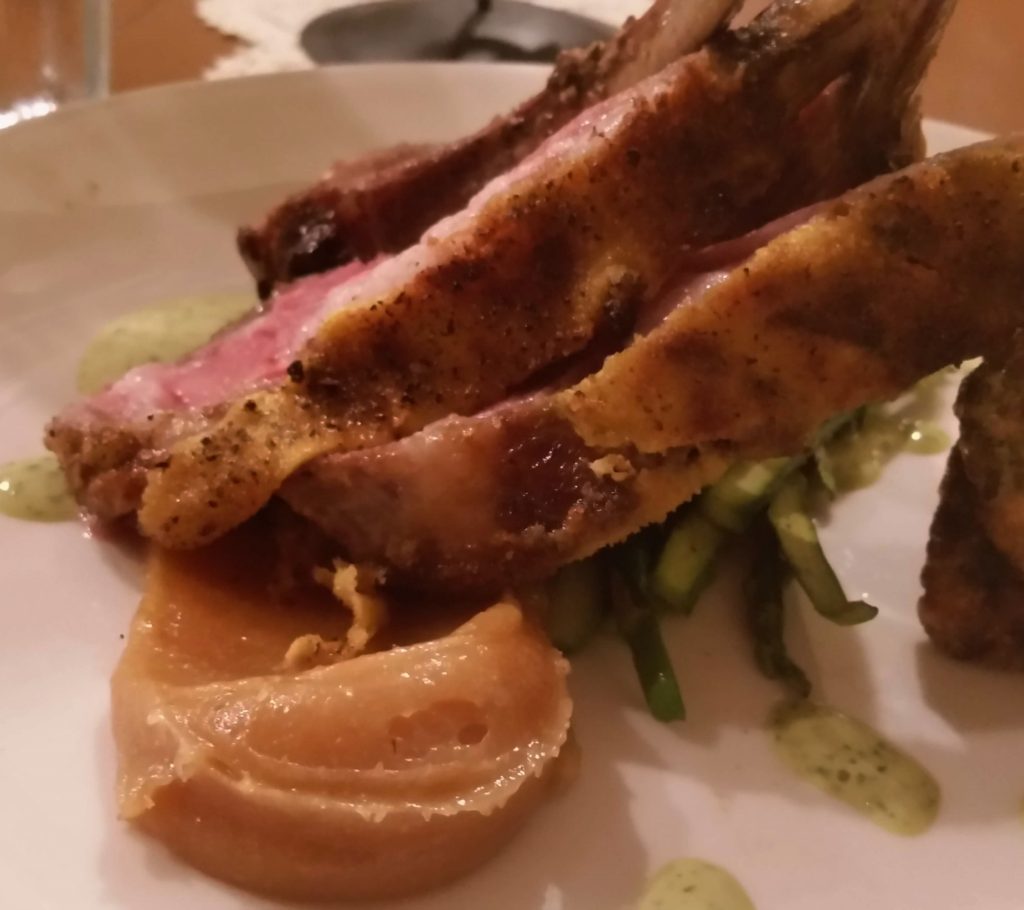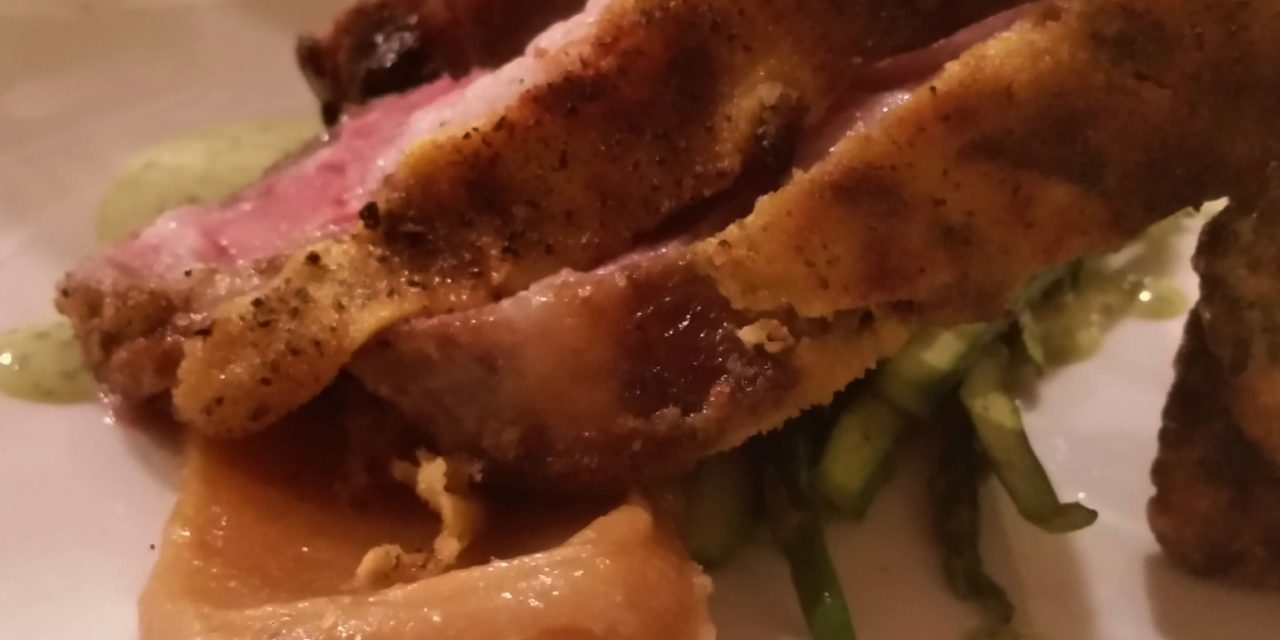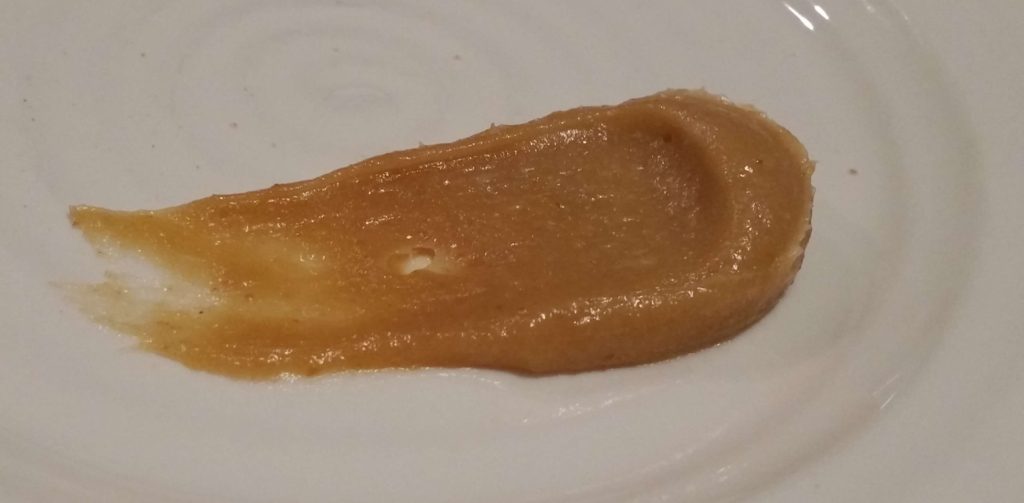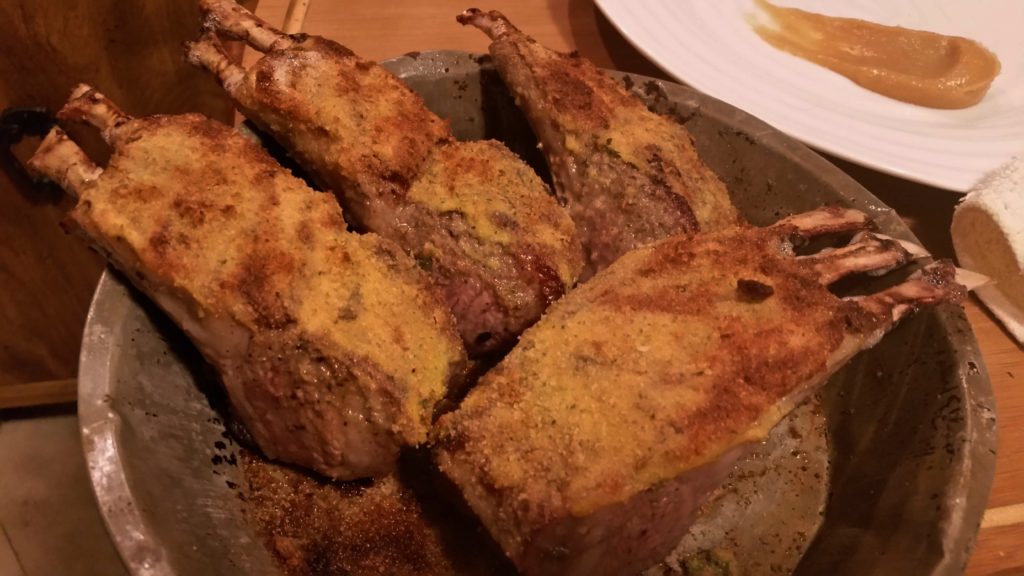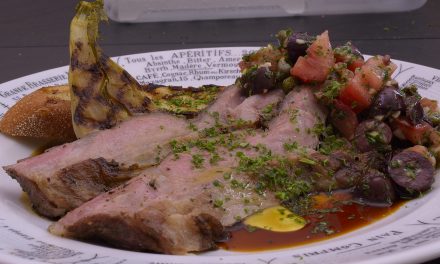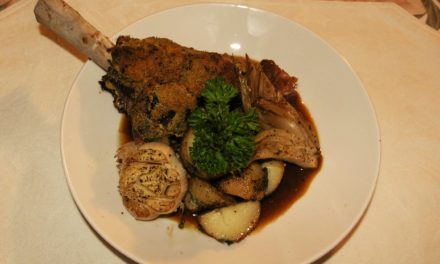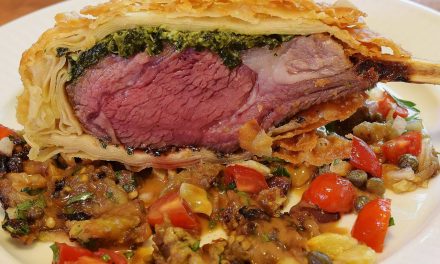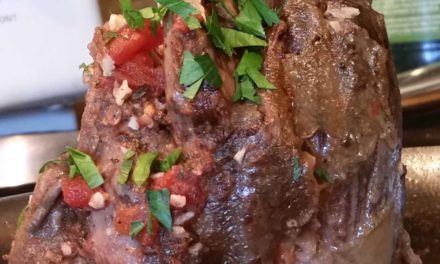We’ll be back, after a word from Señor Membrillo
Pear Membrillo
Pear Membrillo is yet another culinary misnomer. Membrillo is Spanish for Quince fruit, but it also refers to a sort of paste that the quince is used to make. Quince are inedible in their natural state, hard as a rock, bitter, and chock full of pectin, whatever a chock is. Grandma might have made quince jelly. They look kinda like a pear/apple, and primitive, lumpy, sort of Cro-Magnon or Neanderthal. But this stuff is the bomb. No cinnamon or other spices to distract from the subtle but deep pear flavor, it is stone-age simple and hearty, unpretentious.
If you’ve ever made applesauce…here’s what you do.
Ingredients:
- 6 pears, I like Bartletts but any pear will work.
- 2 cups sugar.
- 1 tablespoon salt.
- 2 oz. white vinegar.
- 4 oz. cold butter.
Procedure:
- Cut the pears into quarters, don’t worry about the stems or seeds yet.
- Combine them with everything EXCEPT THE BUTTER in a Ziploc Gallon Bag.
- Squeeze out the excess air. Doesn’t have to be perfect.
- Process via Sous Vide @183Fx2 hours.
- Shock cold.
- Remove mixture from bag and run through a food mill, or blend it, or process it, just mash it all up, and then squeeze it through a strainer. That will catch the seeds.
- Spread the mixture out on a silicone baking mat or something that will neither stick to it or scorch it. Those silicone mats are great, and they’re cheap now too. They save a lot of clean up.
- Bake overnight in your oven @170F, 12 hours usually does it, it will be quite dried out on the edges and darkening a bit. That’s good.
Stop and smell that. I mean, really STOP and smell the pears
- Using a rubber spatula so you don’t damage the mat, scrape the pear mixture back into your food processor or blender.
- Add the butter.
- Blend until heavenly smooth and glistening.
- There is a reason to add the butter now, as opposed to before. Heat damages oil. Time damages oil. Light also damages oil. All oil. Butter is oil.
- If that butter melts and cooks with the pears all together, it will taste good hot, and pretty blah when it gets cold.
- This way, well, you’ll see. It’s also great served with sharp cheese and crackers, some dried figs, that sort of thing. On toast.
- You see membrillo in the stores, the price they charge for it is shocking.
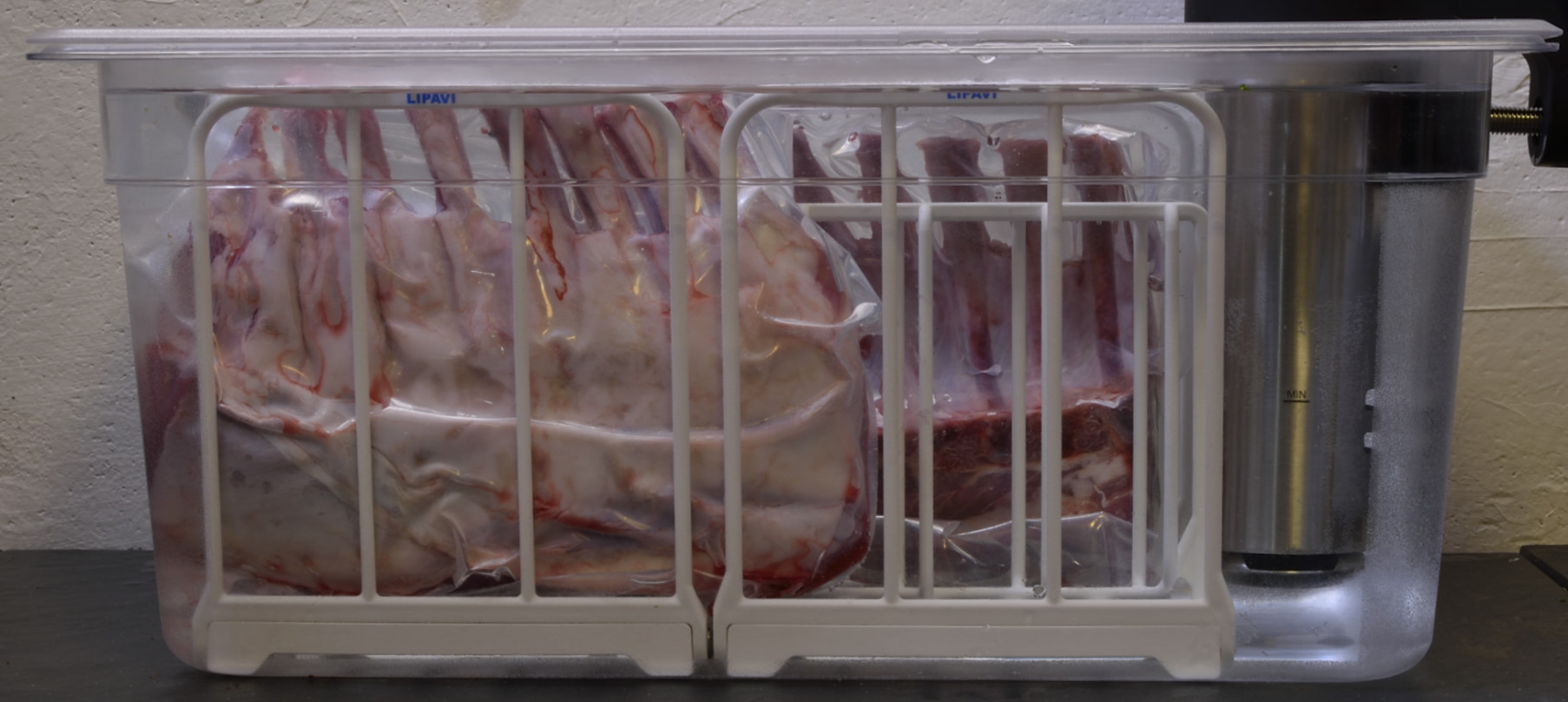
Okay, time to rack’em up
The Rack of Lamb. We use the term “rack” for a lot of things. But even Merriam-Webster’s doesn’t list rack as part of any animal’s anatomy, other than a rack of antlers. So, why is it called a rack of lamb? Is it that, when standing up, with the bones Frenched, it looks like you could hang your hat or keys on it? Hard to believe.
I translated it back and forth into French, but that was no help. Rack translates literally as “grille,” while rack of lamb translates to “carré d’agneau.” “Carré ‘ translates to “square,” but square in English translates back to “place” in French, like Place Pigalle, or Place Denfert-Rochereau, large intersections in the old cities. Like I said — not much help.
We occasionally see the menu term “rack of pork” to help guests visualize the slight similarities in appearance to lamb, and the term is also occasionally applied to wild game; venison and the like. In the case of beef, the corresponding cut would be called Prime Rib, which, of course, is also a misnomer. Terms like loin, short loin, tenderloin, strip loin, sirloin, and even butt (which comes from the shoulder) may all have been intended to romanticize where meat cuts come from, or even just to bewilder guests entirely. Simply put, the anatomy of pork, beef, lamb, and even humans is so similar to each other that it would be easy to call all the corresponding cuts the same names. I’ve got a pain in my short loin that’s killing me.
Regional differences in terminology notwithstanding, pork hind leg is called leg of pork, but when we cure a pork leg, it becomes a ham. The front leg of a pig is rarely seen intact; it’s attached to the shoulder, which is frequently cured to become picnic ham. Sort of. Beef hind leg is top, or inside round, bottom, or outside round, and eye of round. Lamb hind leg is leg of lamb. Wow.
Back in the Saddle Again
Lamb front leg is frequently left attached to the shoulder. Pork belly is belly, but when we cure it, it becomes bacon. Beef belly is navel, and it goes right to the grinder. I’ve seen lamb belly, but there isn’t much to it. A lamb is a pretty small creature. Live weight in the states is usually somewhere around 115 lb., but the Australian and New Zealand lamb that we usually see are much younger and smaller. More like 80lb., live, which means barely 45lb slaughtered.
Finally, a rack starts at the spine, on the front quarter of the animal, just behind the neck; it is comprised of the exterior muscles that protect the ribs, which enclose the abdomen. As the spine (imagine a saddle) continues towards the rear of the animal (or the human), the bones shorten (but not to become short ribs) and become lamb chops, or pork chops, or, in the case of beef, STEAKS. For beef, we call that the prime rib and ribeye on the front end of the animal, and the short loin for the hind end. This is better known for beef as the T-Bone, Porterhouse, New York Strips and Filet, depending on whether or not you remove bones.
To be brief, all the other “sirloins” are in that general area, . There is no such thing as a short rib, those are long ribs that have been cut short. There is no such thing, for example, as a beef chop or beef spareribs. There just isn’t. or, pork chuck. No such thing.
Is that confusing enough?
129Fx8-12 hours
This is how I first process the lamb Sous Vide. Some do it even lower, as low as 125F; there is some debate remaining about the safety of temps below 129F. The lamb is tender already, we are not converting collagen to gelatin. Even though lamb is high in fat compared to some other meats, 129F is not hot enough to render lamb fat. It has a high melting point. The benefit is evident, however when you compare the texture of a traditionally prepared, roasted or broiled rack of lamb, and one that has been processed sous vide.
As small as the eye of the rack is (do racks have eyes?), if you cook it by traditional means and cut it open, it will be “wellish” on the outer fringes, and “rawish,” in the center. The raw lamb has an unpleasant, sort of waxy texture. This is why roasts and chops are allowed to rest after cooking. Sous Vide causes all of those benefits to occur simultaneously–the cooking, and the bleeding through.
Ignore that egg coated potato in the back of the pan. Not every experiment is a booming success.
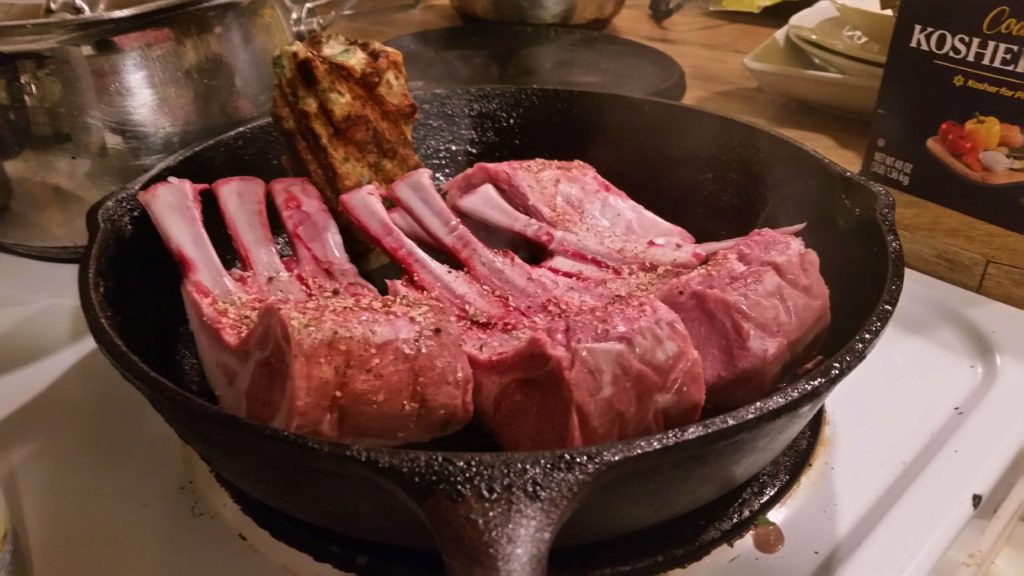
- After processing and shocking, I cut the rack into four pieces, more or less the same size. Count bones–2’s and 3’s, there’s usually 9 total. It can be done whole, but I want to start it stove top, and it fits better in the pan this way.
- Another benefit while I’m thinking about it. Lamb bones burn very easily, get black, catch fire and break off. SV helps manage this, too, because exposure to heat will be of a much shorter duration this way.
- Into the cast iron broiler pan, but any thick bottom will do, on medium heat–sizzling, not smoking. About 300F.
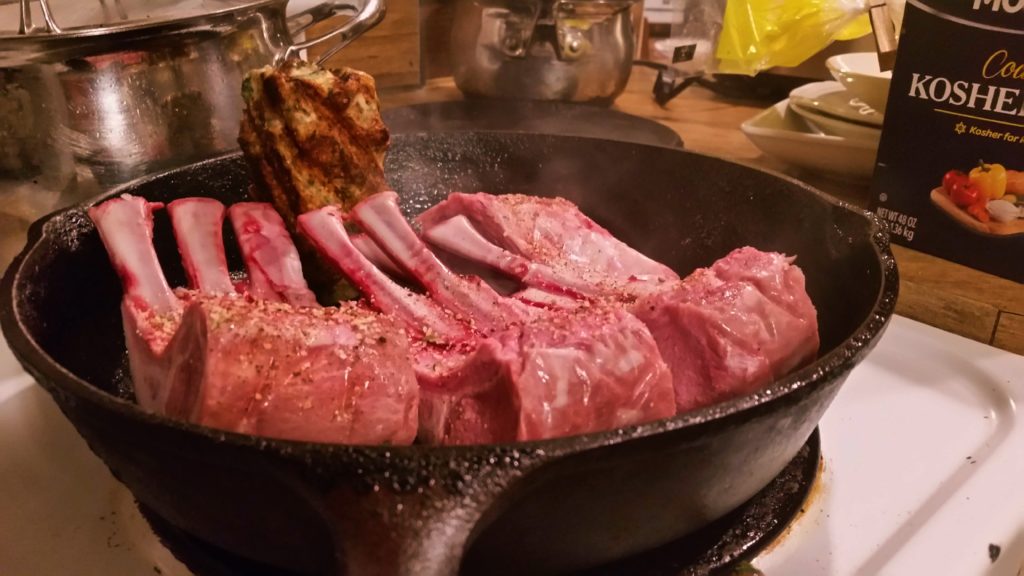
- The purpose is to render as much of the external fat as possible, while avoiding overcooking the lamb itself, so you definitely want to hear sizzling…I might even increase the heat a little after I put the lamb in the pan.
Render unto Buñuel, that which is Buñuel’s
There is a scene from a great art film called “The Exterminating Angel,” where the attendees at a swanky soiree find themselves unable to leave the room without understanding why. During the confusion, sheep pass in and out of the room, somehow symbolizing the innocence of animals contrasted with the contrived depravity of humanity. Over my head, but it was explained to me by some of my artsy friends, and it always comes to mind when I start thinking about lamb. That, and the Lecter movie. Yeah, that too. “Quid pro quo, Agent Starling.”
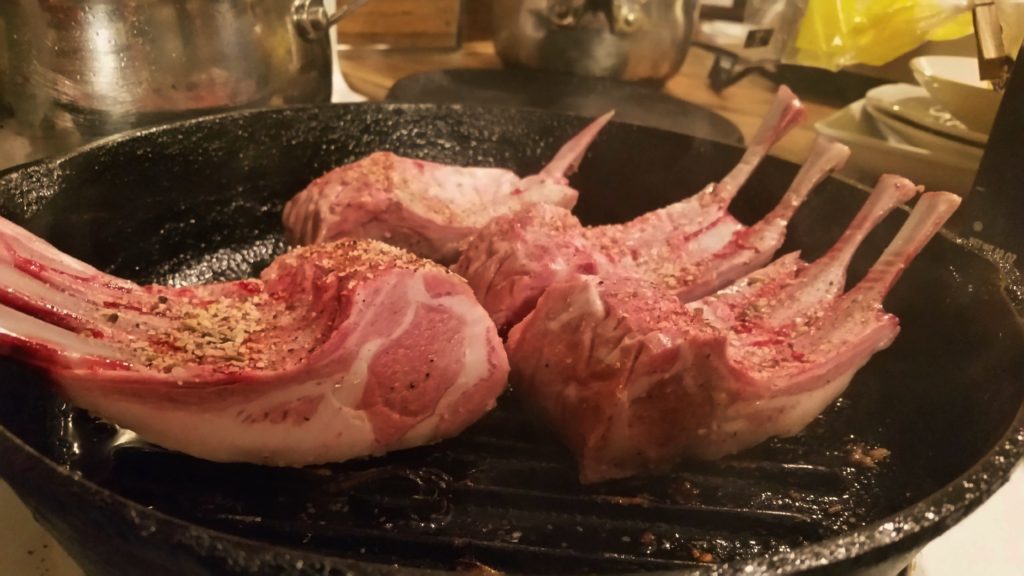
- You can see that the lamb doesn’t actually sit flat in the pan, so the browning will not be even, unless we troubleshoot a little bit.
Weight for it, weight for it…
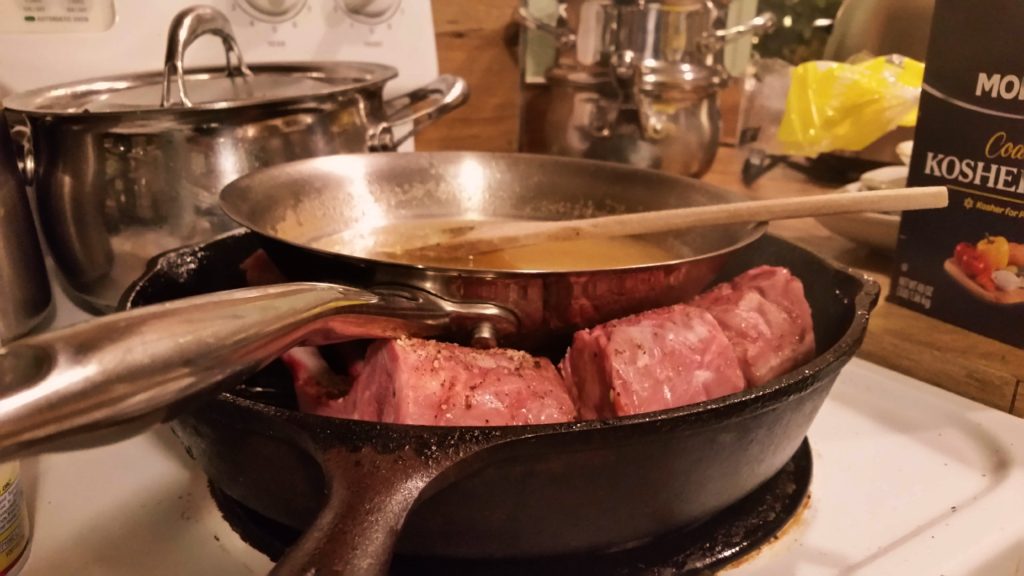
- I’ve spoken about weighting/pressing meat during the cooking process, and I generally take a dim view of it. Not because it’s just bad on its own, but because it becomes a habit, and I can’t stand seeing a hurried, harried cook pressing down on a filet with his spatula in the vain attempt to make it cook faster. This sends a shudder, because it doesn’t speed up the process in that model, it just squeezes out the juices along with all the desirability.
- HOWEVER, the application of gentle pressure at the BEGINNING of the cooking process can slightly modify the shape of the lamb, in this case, to better form the desirable crust.
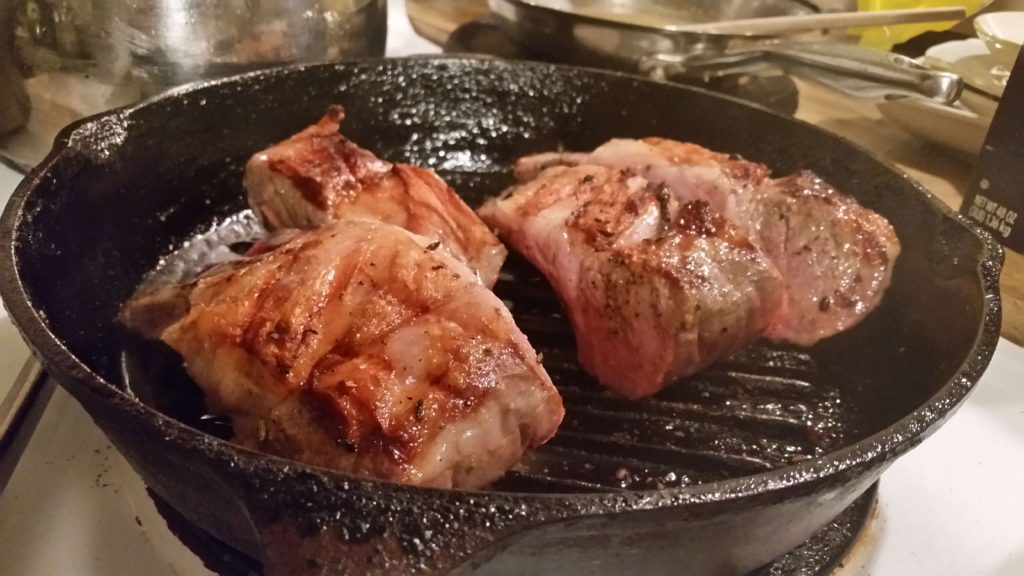
- Not to scorch, just to melt. Turn them over, and…
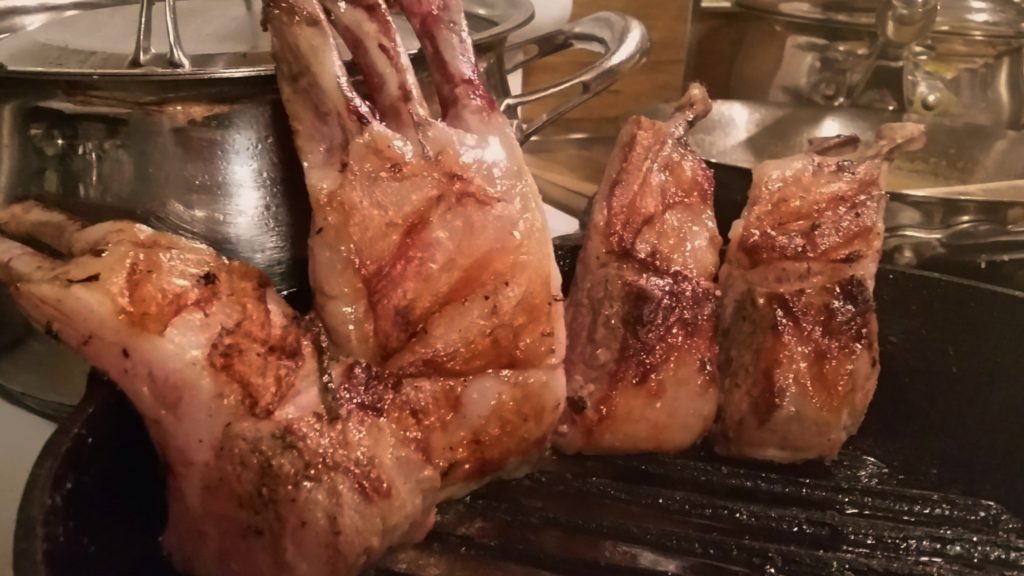
- It’s a good idea to sort of stand them up and finish rendering a little bit off the ends — the bones hanging out of the pan prevent them from getting brittle and burning.
It’s all just so beautiful
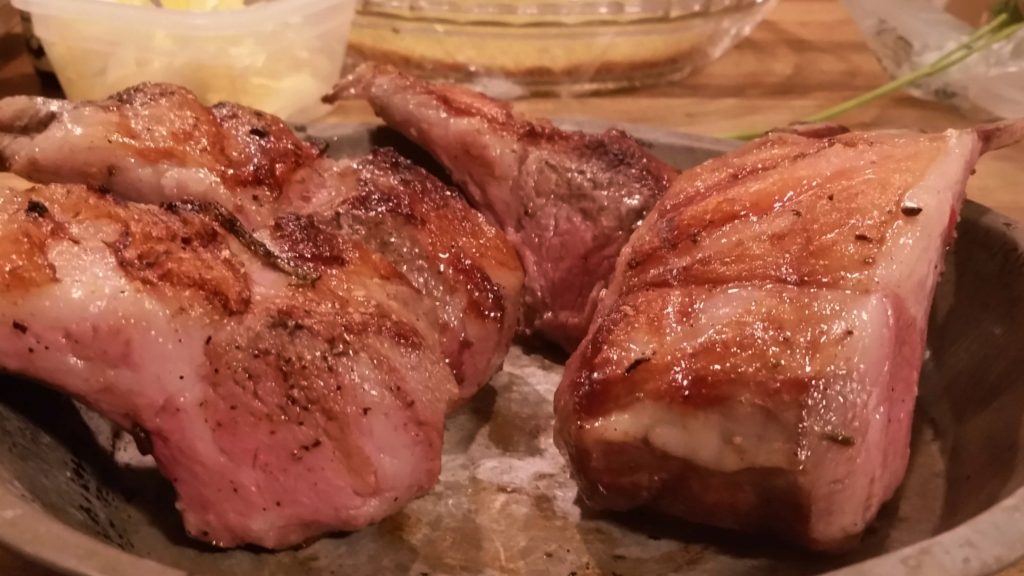
- Remove the lamb to a pie pan or other generic baking dish.
- We can smell the aroma of the warmed lamb, while we become one with our mise en place.
- I really dig hanging out in the kitchen.
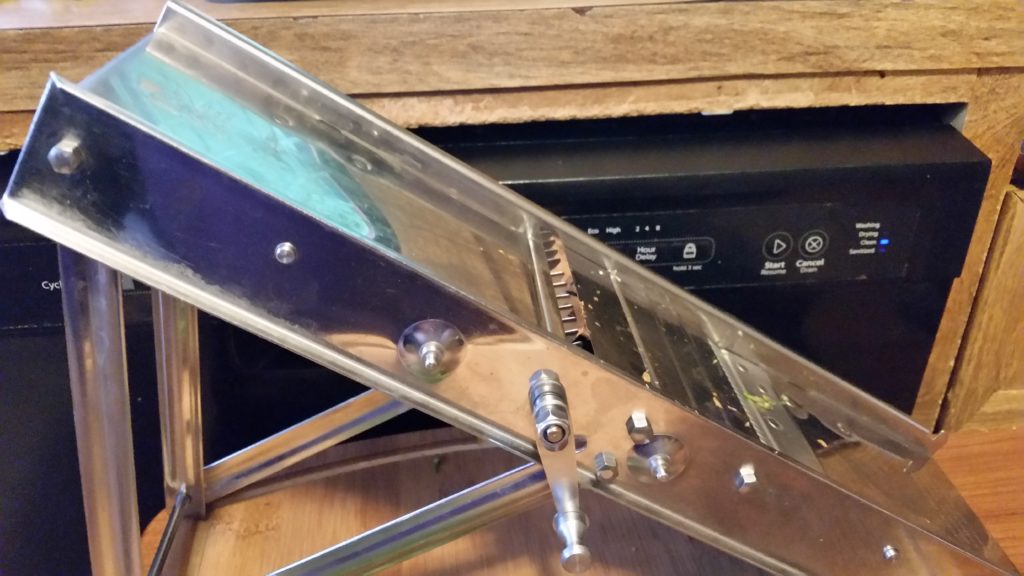
Play that Mandolin like yer Marty Stuart
- Use the trusty mandolin to shave the asparagus.
- Love the mandolin.
- RESPECT the mandolin.
- The mandolin is sharp.
- It is cold, and uncaring. But it is of great value.
- Learn to appreciate it, take care of it. Use the guard.
- WATCH WHAT YOU’RE DOING.
- Don’t try to do it like they demo it on TV and on YouTube. It works just fine if you go slow.
- Don’t smoke pot while you’re using the mandolin.
- If you still cut yourself using the mandolin, it’s okay to smoke pot THEN, but not before or during, depending on your jurisdiction.
Burns are worse than cuts anyway
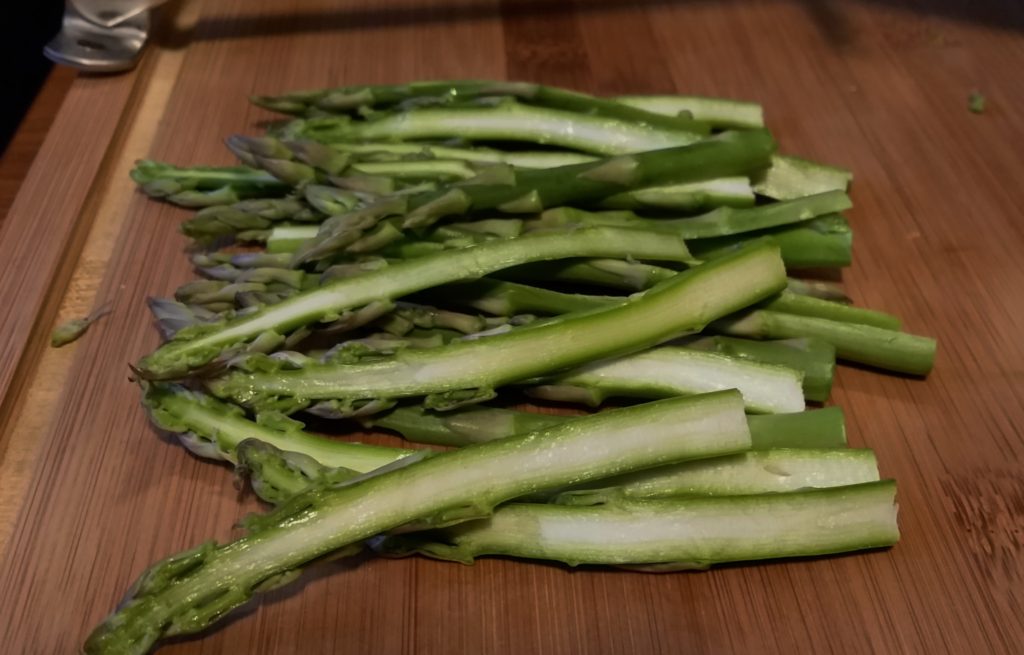
- You can do it, you know you can do it.
- Feed the tips in, so they don’t break off. They don’t have to be halves, if you just go slow, you’ll get nice slices, and a little bit goes a long way.
- They look awesome, so don’t tell people how you did it.
- Some guys do it with a potato peeler.
- I’ve tried to do it with a knife, that’s a guaranteed fail.
- Sprinkle with a little salt and pepper, and cook them in the pan that you did the lamb in–just wipe out the extra fat, heat it up, throw them in, flip around a little, and spread them out to cool. They really only take a few seconds.
- Make sure you spread them out, so they don’t turn black.
- Simple.
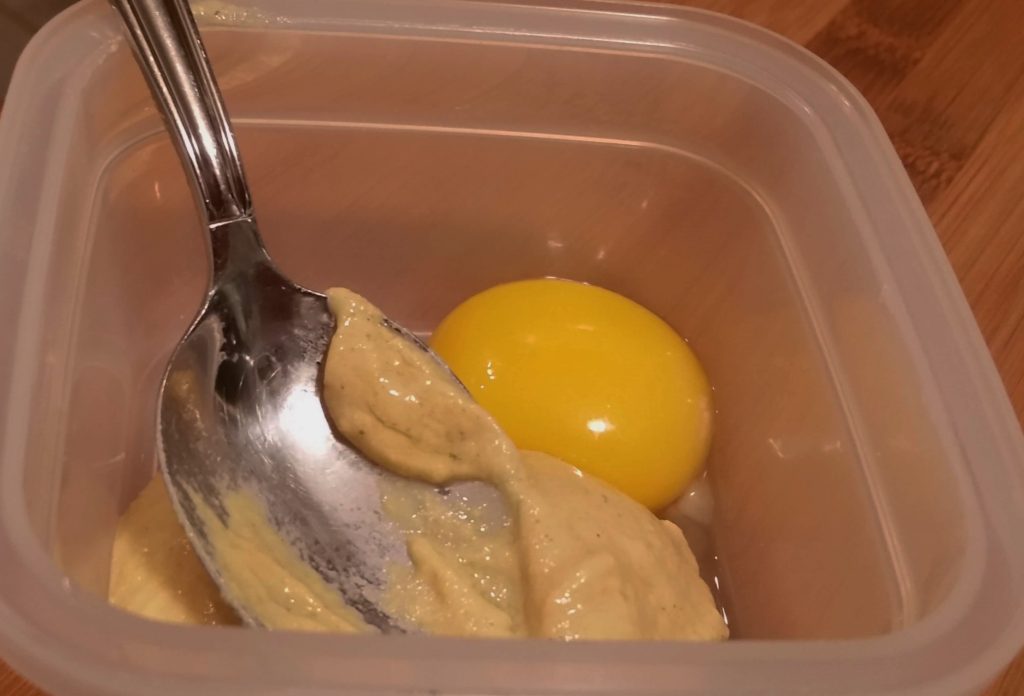
- Combine one egg yolk with 1 oz. Dijon, or your favorite mustard.
- If you don’t like the idea of the egg, it will work without it, but the egg cooks and forms a nice little jacket for the lamb.
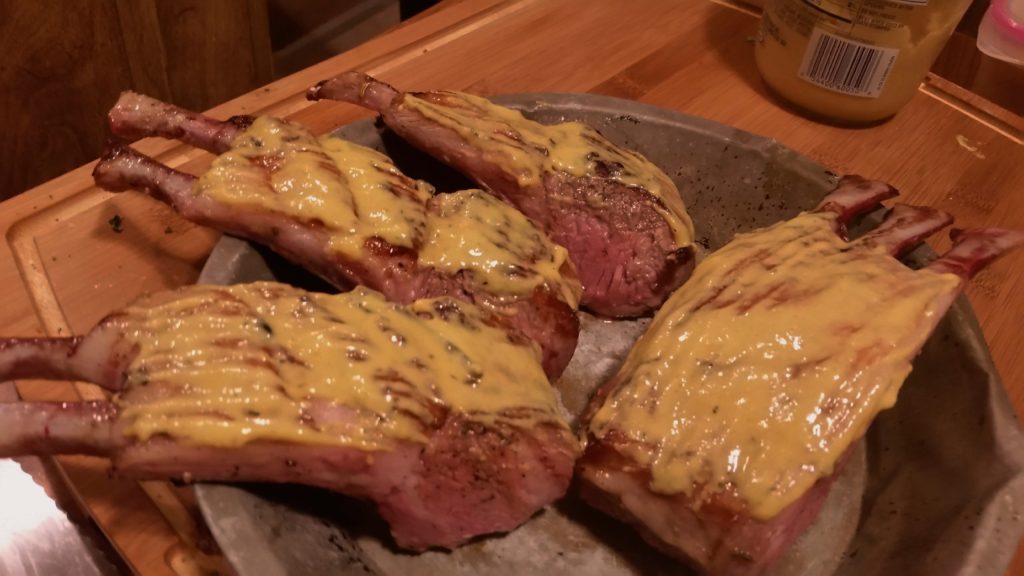
- Paint the lamb with the mustard/yolk mixture.
de Kooning, definitely, thick like Pollack
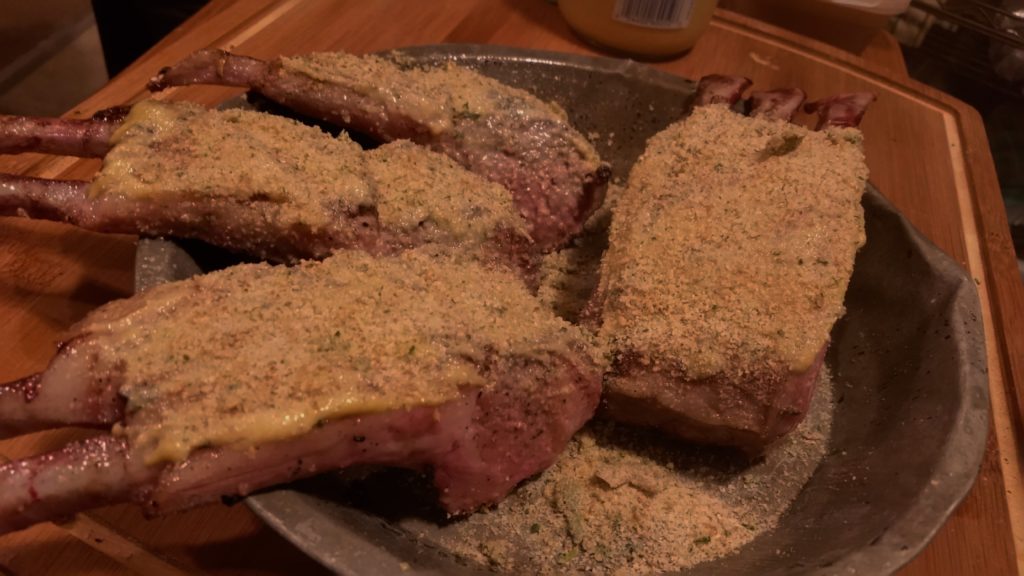
- Sprinkle generously with the parsley crumb mixture.
- Some guys and gals like to put garlic powder in the crumbs, but I took a lot of verbal beatings from Italian chefs over modifying the succinct purity of a bread crumb, so I don’t do it.
- When it comes to parsley in things, I say damn the critics, full speed ahead.
- Don’t be afraid, you can spray with a little Pam, or carefully drizzle with butter. You can buy those misters that you can put oil in, tres chi-chi, so I just use Pam. It’s oil.
- No big deal, a few minutes in a 350F oven will give you some nice color, or you can use the broiler function. Just don’t put the lamb too close to the broiler element.
- This is the great thing about electric ovens.
- Gas ovens with the broiler down on the floor are just too hard for me to get to, so I crank the oven, that will do it.
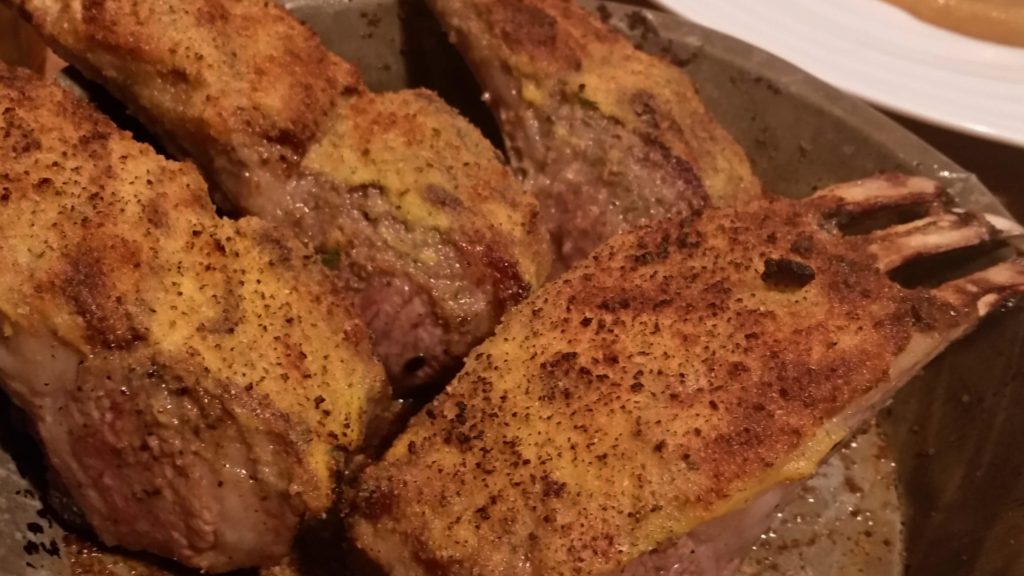
When it’s brown, it’s done. When it’s black, YOU’RE done
- You can see where I touched them up with the torch, that sort of peppery, powdery pattern in the low center of the screen.
- Torches are great for some things, but I prefer that overall, almost loaf of bread kind of consistency to the crust.
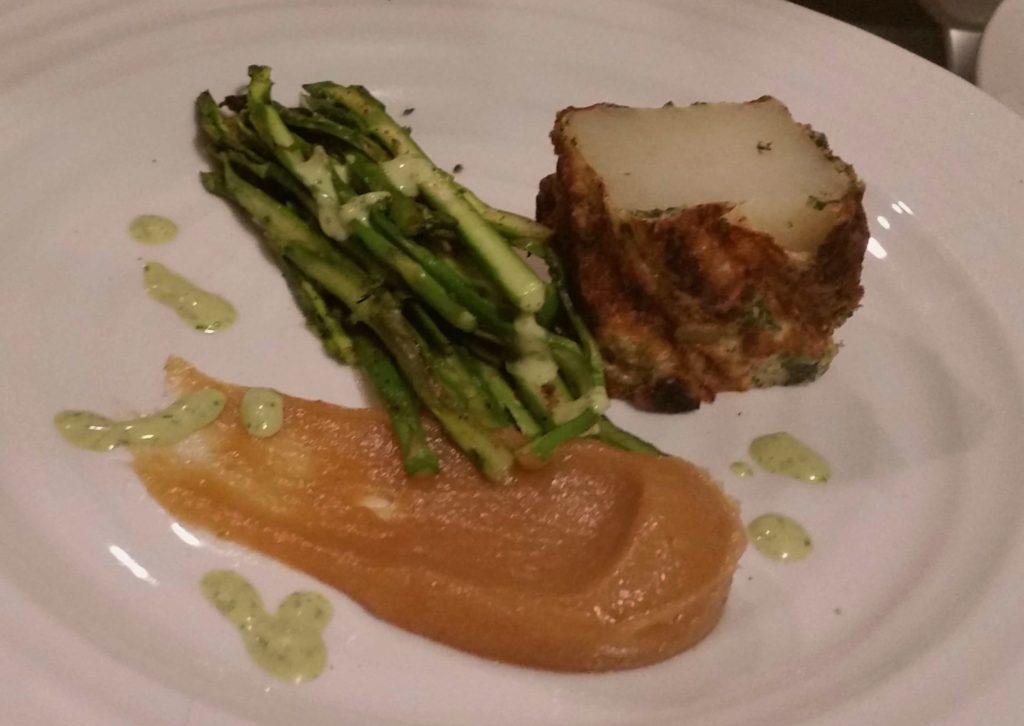
- Hot plates are wonderful things.
- Again, pretty basic, old school, journeyman smiley face presentation.
- It’s good.
- Paint a little Nike swoosh on there with the membrillo to cradle the lamb. Ay, Mami.
- I drizzled a little bit of the usual suspect parsley aioli, just mayo with EVOO and garlic, we want a little something green.
- We’ll pretend it’s mint, that would be good.
- Everybody uses rosemary on this, so I don’t.
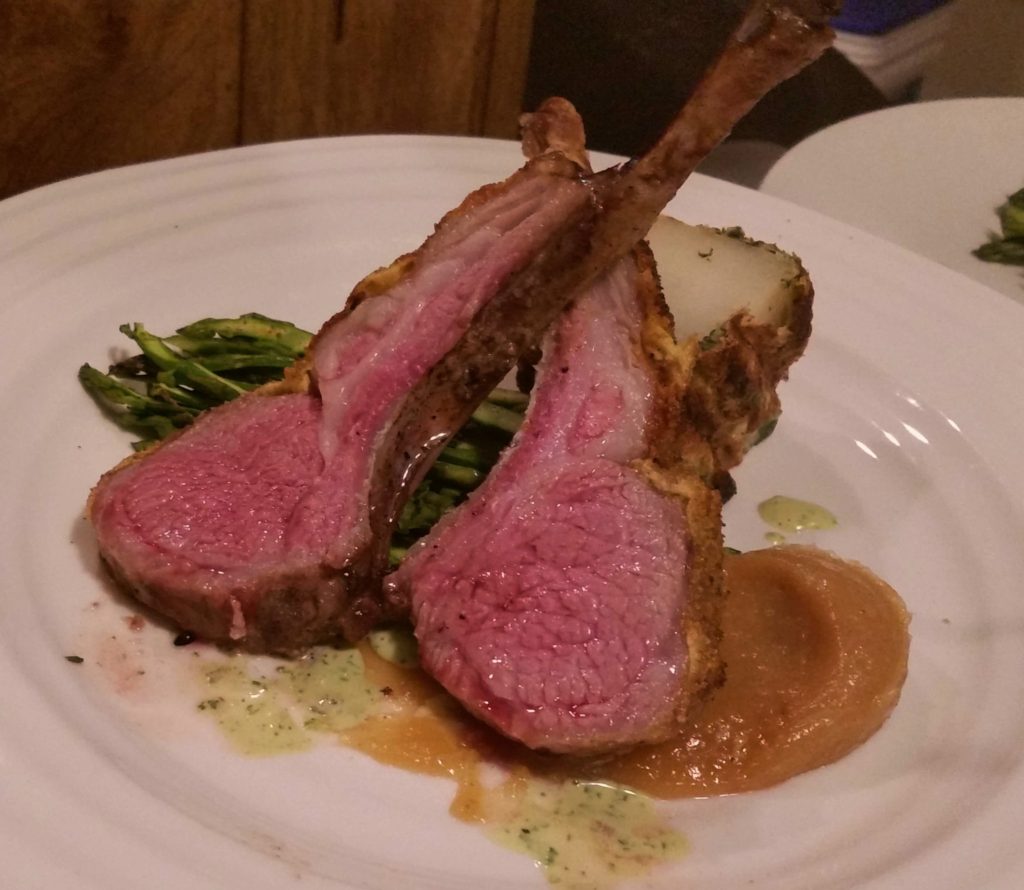
Stand them up, so you can hang something on them
- We’re not gonna talk about the potato.
- It tasted okay, but it looks totally stoopid.
- This happens. I’m not afraid to share.
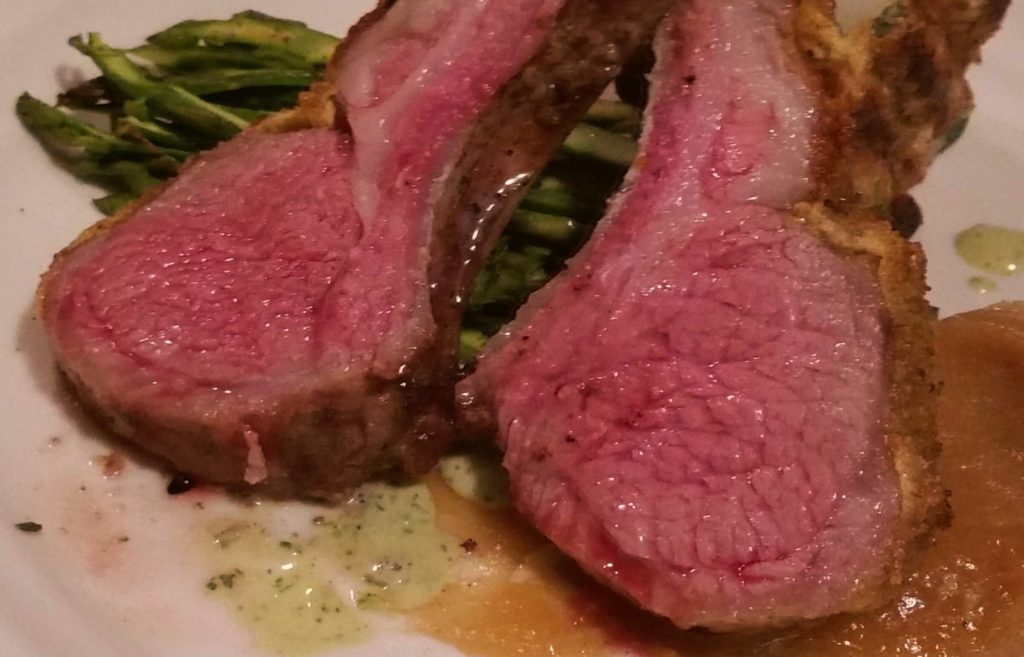
- But just look at that. Thass awesome.
- And now, word about the appearance of doneness.
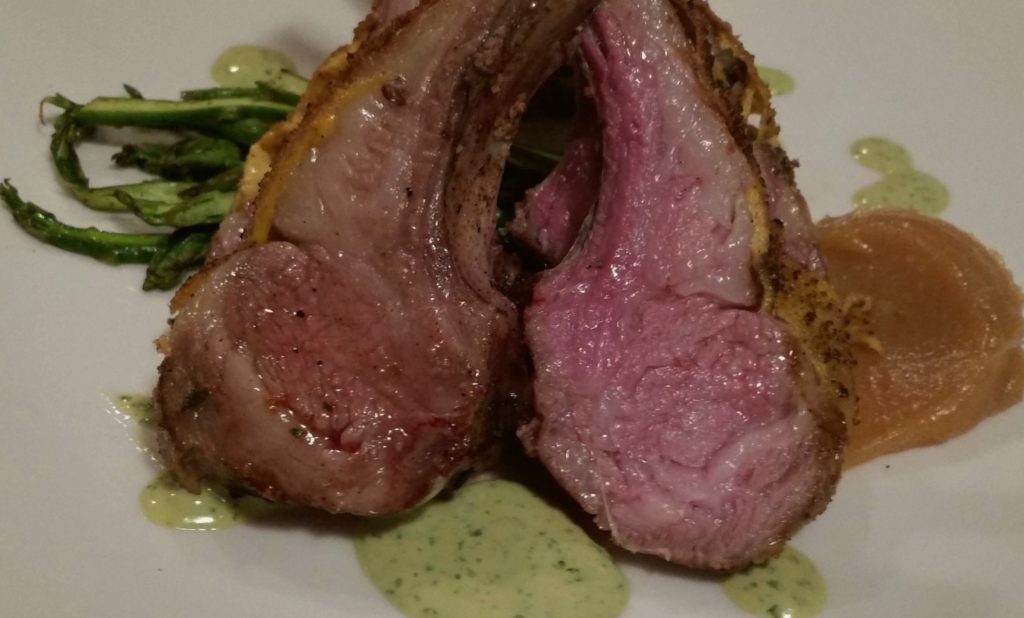
THERE IS NO SHAME IN WELL DONE
- Experienced diners, cooks, and chefs alike make fun of people who prefer their meat well done, but, gentle readers, please consider that 95% of the world’s population would be content to have a piece of meat to eat, period, regardless of how much myoglobin remained.
- Well done meat is safe. It’s not necessarily burnt.
- Don’t we already have enough mindless, trivial, contrived distinctions to separate us from each other?
- There’s no accounting for taste.
- If you like your meat well done, don’t be embarrassed, screw everybody else. You’re the one what’s gonna eat it.
- People that judge other people on the basis of how they like their meat cooked need to get a life.
- There, I said it.
- Love one another.
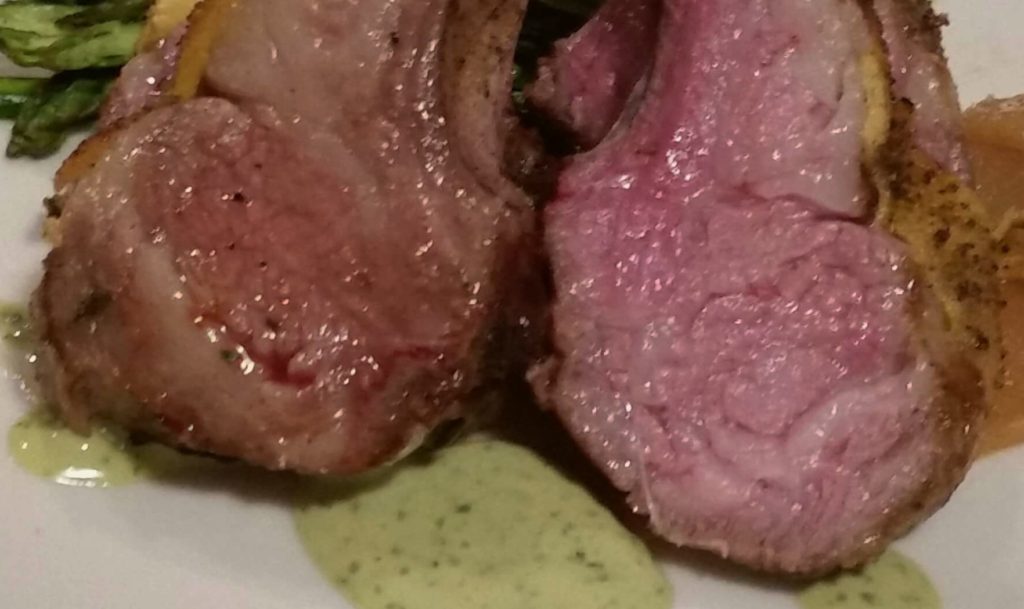
- When your wife, or your father-in-law likes it a little bit more done, just use the torch to take out that red color. Now, THAT’S a good use for the torch.
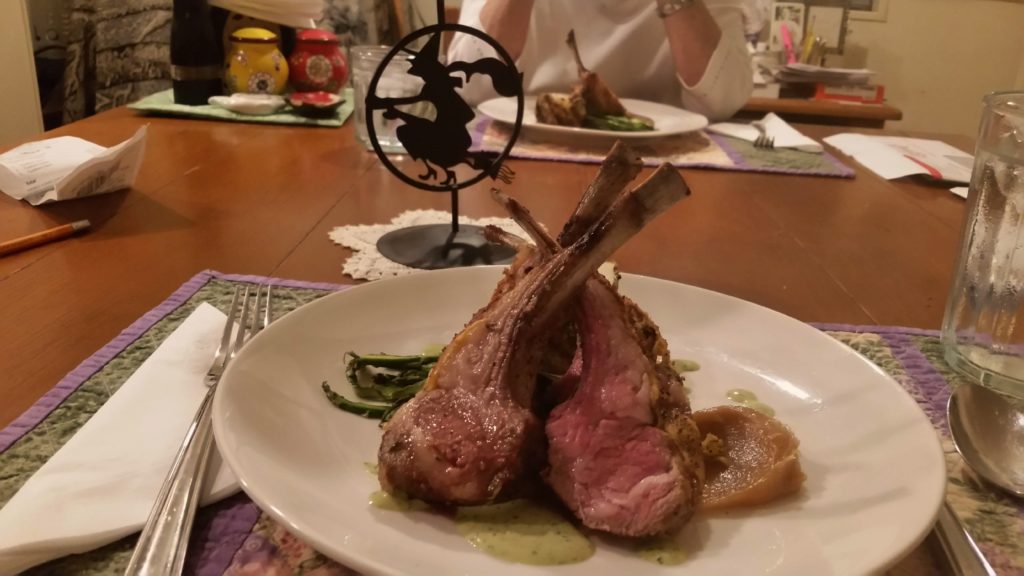
- You know, I made the paper frills, the little booties, to put on the lamb bones. They’re really cute, and then I forgot them. They will show up later, another exercise in futility designed to punish apprentices.
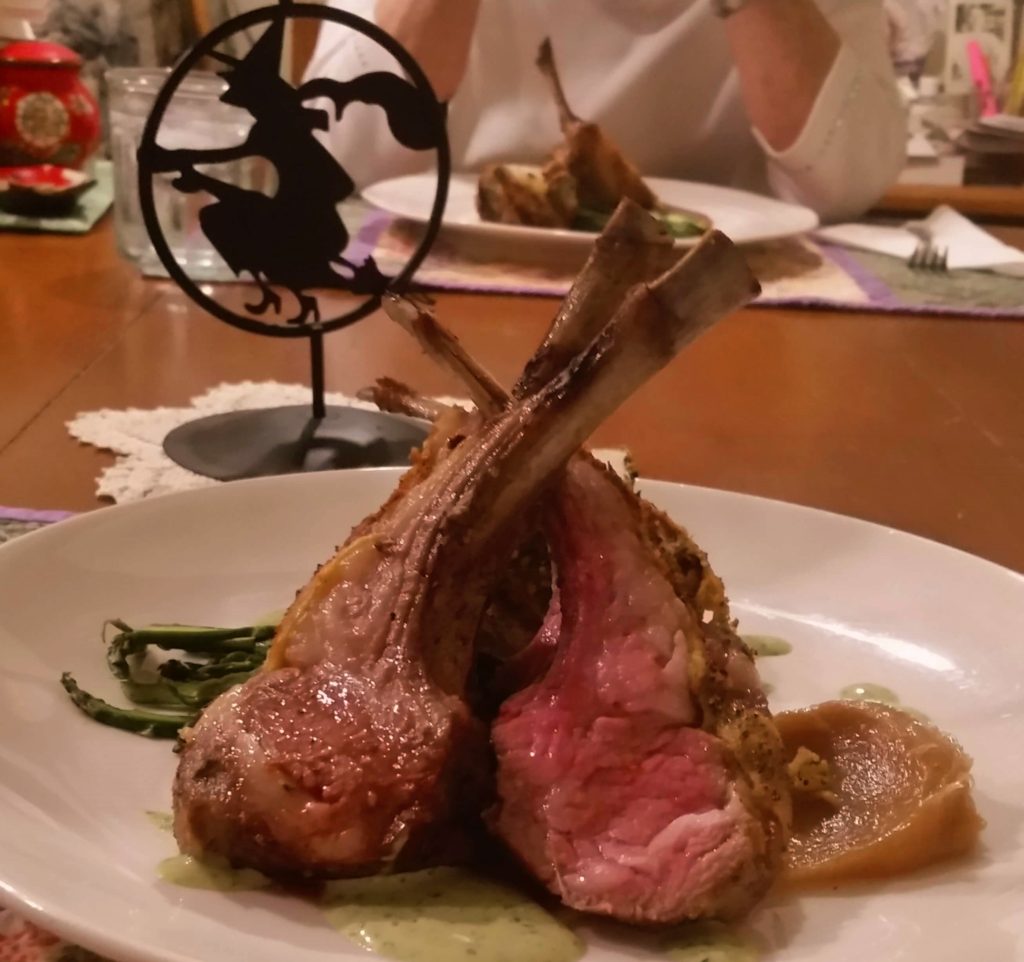
- This rocks.
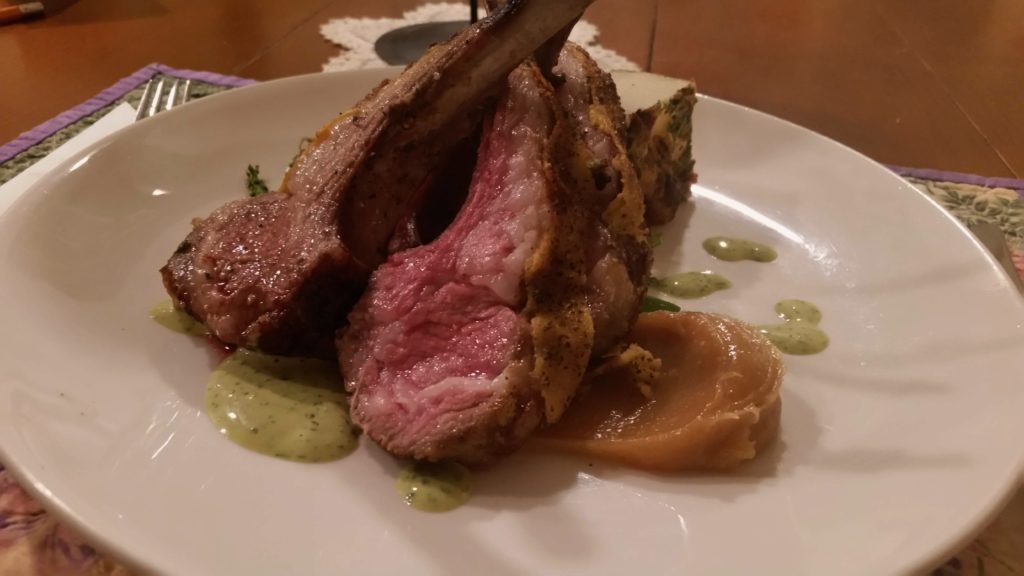
- Slowly rotating to the side, you can start to see how that crust forms.
